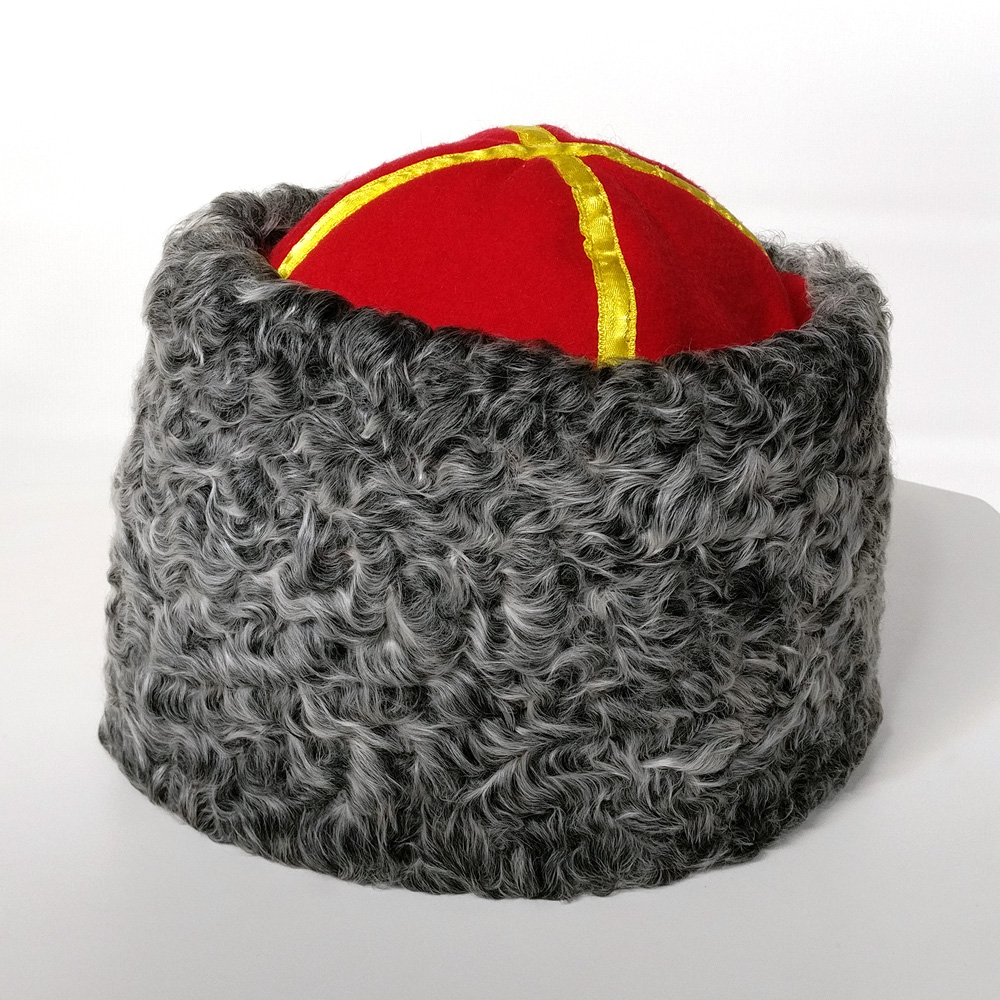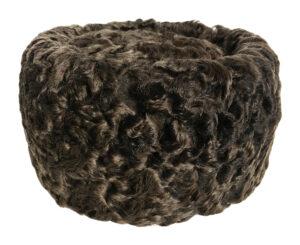 Through the centuries, papakha (or papaha) has been among essential attributes of the Cossacks. Its value is famously mentioned in Poltava by Alexander Pushkin. Considered inviolable, Cossack hats could only be given away upon death. For this reason, knocking it off a man’s head would be viewed as a grave insult and a challenge to a duel. However, an owner’s act of throwing his hat down would signify a bet on his own life.
Through the centuries, papakha (or papaha) has been among essential attributes of the Cossacks. Its value is famously mentioned in Poltava by Alexander Pushkin. Considered inviolable, Cossack hats could only be given away upon death. For this reason, knocking it off a man’s head would be viewed as a grave insult and a challenge to a duel. However, an owner’s act of throwing his hat down would signify a bet on his own life.
In the Russian Empire, a military regulation allowed for mass heroism decorations to be attached to hats driving their value even further up. Actively serving Cossacks also used to carry small icons sewn into lining, which allowed them to pray anywhere, be it in a field, at a battle front, or during a march.
 During peacetime, the hat played a very important role in a Cossack’s civic life. The hat denoted legal rights of a man as the elder of his family. Hats of fallen Cossacks would be returned to their homes to be placed in the prayer corner signalling protection from God thereon. Papakha hats served a major role in matchmaking and weddings as well.
During peacetime, the hat played a very important role in a Cossack’s civic life. The hat denoted legal rights of a man as the elder of his family. Hats of fallen Cossacks would be returned to their homes to be placed in the prayer corner signalling protection from God thereon. Papakha hats served a major role in matchmaking and weddings as well.
 Although Cossack hats generally take the form of a papakha, their shape can vary greatly. The main distinction is between rigid and soft hats. While the former are more structured and generally made of Persian lamb, the latter variety is best achieved through the use of sheepskin with its characteristic long curls. Kubanka is another major type that is known widely across the former Soviet states. It is lower but also of a more rigid and structured variety. As the name suggests, it originates from the Kuban Cossacks.
Although Cossack hats generally take the form of a papakha, their shape can vary greatly. The main distinction is between rigid and soft hats. While the former are more structured and generally made of Persian lamb, the latter variety is best achieved through the use of sheepskin with its characteristic long curls. Kubanka is another major type that is known widely across the former Soviet states. It is lower but also of a more rigid and structured variety. As the name suggests, it originates from the Kuban Cossacks.